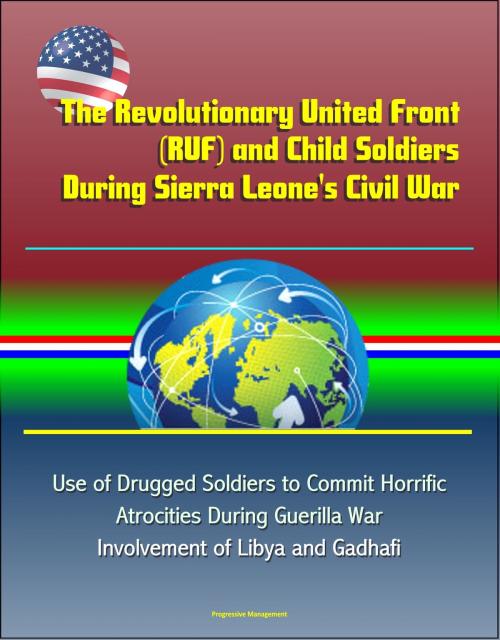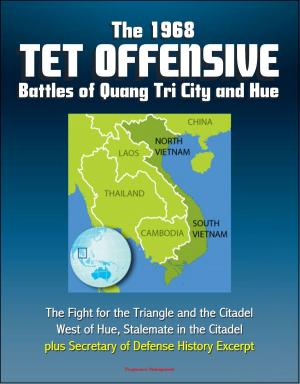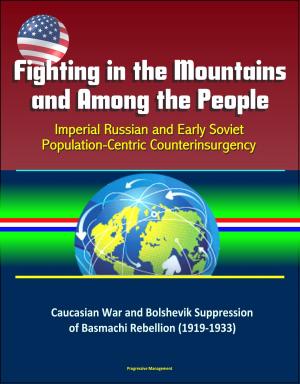The Revolutionary United Front (RUF) and Child Soldiers During Sierra Leone's Civil War - Use of Drugged Soldiers to Commit Horrific Atrocities During Guerilla War, Involvement of Libya and Gadhafi
Nonfiction, History, Africa, Social & Cultural Studies, Political Science| Author: | Progressive Management | ISBN: | 9781370311491 |
| Publisher: | Progressive Management | Publication: | March 18, 2017 |
| Imprint: | Smashwords Edition | Language: | English |
| Author: | Progressive Management |
| ISBN: | 9781370311491 |
| Publisher: | Progressive Management |
| Publication: | March 18, 2017 |
| Imprint: | Smashwords Edition |
| Language: | English |
This report has been professionally converted for accurate flowing-text e-book format reproduction. On March 23, 1991 a rebel group in eastern Sierra Leone known as the Revolutionary United Front (RUF) ignited a civil war in that country that would last over ten years and ultimately result in the death of over 50,000 civilians. Their weapons of choice were child soldiers. Poorly trained, immature and drugged, child soldiers would commit unimaginably horrific atrocities on a grand scale. The RUF saw children as a free, easy to manipulate, abundant, and when drugged, aggressively inhumane force that would conduct fighting for the side that gave them a sense of belonging and home. The RUF's means to accomplish its objectives sunk to new levels when its child soldiers turned to limb amputations, torture, rape, and executions. Sierra Leone's civil war is an interesting case study of how a rebel group could use a sizeable population of a nation's children to commit mass atrocities for the stated purpose of revolutionary change. The RUF's use of child soldiers was the result of failures in governance, extraordinary poverty, and opportunistic and apathetic leadership that synergized to create uniquely horrific conditions that led to this outcome.
CHAPTER 1 INTRODUCTION * Overview * Research Question * History up to Sierra Leone's civil war * Significance of the Study * Master of Military Art and Science Outline * CHAPTER 2 LITERATURE REVIEW * Existing Literature and Schools of Thought * Conclusion * CHAPTER 3 RESEARCH METHODOLOGY * Type of Research * Process to Answer Secondary Questions * Repeatability of the Study * Weaknesses of a Case Study.. Limitations Definitions * CHAPTER 4 ANALYSIS * State Security * Law and Order * Education * Child Soldiers Affected the Nature of fighting during the civil war * The International Community Shares Responsibility for the Use of Child Soldiers throughout the civil war * Summary * CHAPTER 5 CONCLUSION * Recommendations to Prevent the Use of Child Soldiers * Responsibility to Protect * Deterrence * Further Research on the Topic
Sierra Leone's civil war (1991 to 2003) stands out from other conflicts for several reasons. The extensive use of child soldiers by the Revolutionary United Front (RUF) augmented the brutality of the conflict and contributed to the severity of atrocities. Child abductions, limb amputations, cannibalism, forced sexual slavery, rape, torture, and executions were some of the major crimes leveraged against all sides of the conflict. An entire generation of Sierra Leonean children lost their innocence through both their roles as victims and perpetrators. The RUF were the first to use child soldiers and the greatest violators of this crime throughout the civil war. Their objective was to invade Sierra Leone, launch a guerilla war, and usurp authority from the Sierra Leonean government for political power, financial, and natural resources.
This report has been professionally converted for accurate flowing-text e-book format reproduction. On March 23, 1991 a rebel group in eastern Sierra Leone known as the Revolutionary United Front (RUF) ignited a civil war in that country that would last over ten years and ultimately result in the death of over 50,000 civilians. Their weapons of choice were child soldiers. Poorly trained, immature and drugged, child soldiers would commit unimaginably horrific atrocities on a grand scale. The RUF saw children as a free, easy to manipulate, abundant, and when drugged, aggressively inhumane force that would conduct fighting for the side that gave them a sense of belonging and home. The RUF's means to accomplish its objectives sunk to new levels when its child soldiers turned to limb amputations, torture, rape, and executions. Sierra Leone's civil war is an interesting case study of how a rebel group could use a sizeable population of a nation's children to commit mass atrocities for the stated purpose of revolutionary change. The RUF's use of child soldiers was the result of failures in governance, extraordinary poverty, and opportunistic and apathetic leadership that synergized to create uniquely horrific conditions that led to this outcome.
CHAPTER 1 INTRODUCTION * Overview * Research Question * History up to Sierra Leone's civil war * Significance of the Study * Master of Military Art and Science Outline * CHAPTER 2 LITERATURE REVIEW * Existing Literature and Schools of Thought * Conclusion * CHAPTER 3 RESEARCH METHODOLOGY * Type of Research * Process to Answer Secondary Questions * Repeatability of the Study * Weaknesses of a Case Study.. Limitations Definitions * CHAPTER 4 ANALYSIS * State Security * Law and Order * Education * Child Soldiers Affected the Nature of fighting during the civil war * The International Community Shares Responsibility for the Use of Child Soldiers throughout the civil war * Summary * CHAPTER 5 CONCLUSION * Recommendations to Prevent the Use of Child Soldiers * Responsibility to Protect * Deterrence * Further Research on the Topic
Sierra Leone's civil war (1991 to 2003) stands out from other conflicts for several reasons. The extensive use of child soldiers by the Revolutionary United Front (RUF) augmented the brutality of the conflict and contributed to the severity of atrocities. Child abductions, limb amputations, cannibalism, forced sexual slavery, rape, torture, and executions were some of the major crimes leveraged against all sides of the conflict. An entire generation of Sierra Leonean children lost their innocence through both their roles as victims and perpetrators. The RUF were the first to use child soldiers and the greatest violators of this crime throughout the civil war. Their objective was to invade Sierra Leone, launch a guerilla war, and usurp authority from the Sierra Leonean government for political power, financial, and natural resources.















